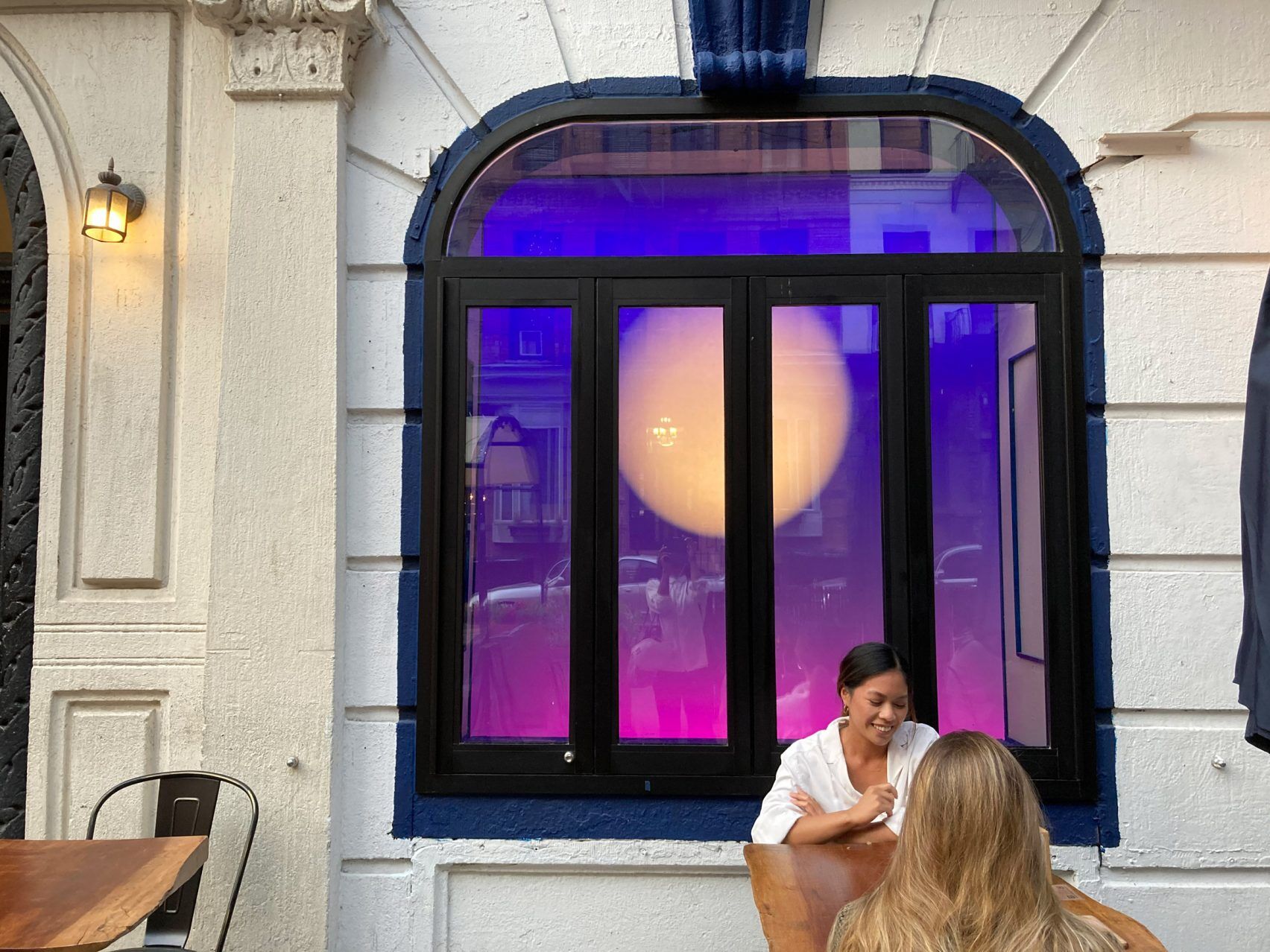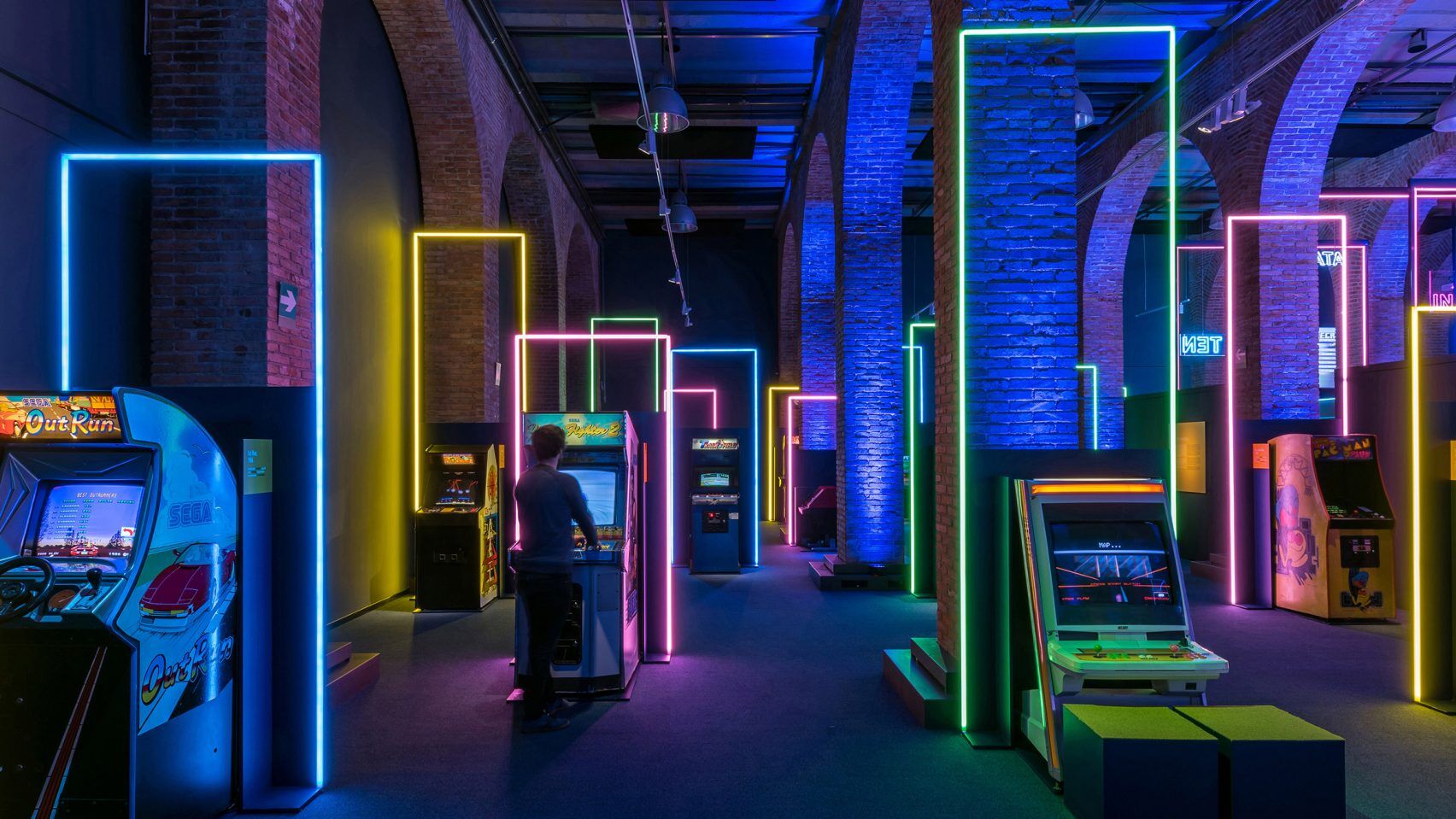Holiday season is upon us, marking the return of evergreen scents, tasty treats, and the quirky traditions that each family unwaveringly maintains. This time is typically described as one of indescribable magic, with snowflakes swirling as fireplaces keep us warm and cozy. As the cold sets in, our buildings are set ablaze with light. Dazzling storefronts lead shoppers inside, promising an end to the search for the perfect holiday gift. Homes sparkle with strings of colored bulbs, twinkling red and green, blue and white. The brighter the better—everything shines with eye-catching, saturated light.
The most spectacular displays often incorporate neon or fluorescent light, which seem to glow just a bit more splendidly than others. Some of these light-shows feature entire scenes, with Rudolf’s radiating, red nose reaching toward a constellation of incandescent stars. In this Edge piece, we explore fluorescent light, which can illuminate even the darkest of December night skies.

Fluorescent light shines due to the energy that certain gaseous substances, contained within tubing, release upon interacting with electricity; neon represents just one form of this type of lighting. Neon itself is one of the noble gases of the periodic table, first used to create light over 100 years ago, in 1902. The technology behind fluorescent lighting has remained largely the same, however: a glass tube is filled with a small amount of a noble gas, which is then subjected to an electrical current, produced by two electrodes on either end of the tube. When the voltage has reached a certain level (around 15,000 volts), enough energy has been created to “excite” electrons in the gaseous atoms. To return to their resting states, electrons must release any excess energy, which is freed in the form of photons (light). Each noble gas emits a specific color of light—this is because of differences in the wavelengths each gas’s excited electrons give off. To the human eye, neon glows orange-red, argon glows blue, helium glows pink, and krypton glows green.
Recently, fluorescent light has been making appearances in art installations around the globe, giving each project a touch of luminescent wonder. In Madrid, Smart & Green Studio engineered a world of gleaming splendor, part of the “Game On” exhibition-tour showcasing the history of video games. Yellow, blue, pink, and green lights lined the space, creating architecture reminiscent of the technicolor gaming landscapes of the 1980s. “’The design follows simple geometries and repetitions as some of the most famous video games did,’” said Smart & Green’s founder, Fernando Muñoz. The space, an underground cistern in the Spanish capital, housed more than 150 LED lights; these were color-coded to create 15 distinct sections, where visitors could play early, classic, and recent video games alike.

After the height of the COVID-19 pandemic had passed, Flint Collective used fluorescent light to reinvigorate eight empty storefronts in New York City.
The installation aimed to bring color and light back to the East Village, a neighborhood that suffered tremendously during the global shut-down. Named “Open,” the project utilized pink, blue, and red lights to transform each vacant space into a pocket of phosphorescence.
Believing that they represent a “’universally understood language in nature,’” the designers also incorporated motifs of the moon, the horizon, and the ocean.
Open drew on help from local artists, designers, and volunteers, unifying the community after a time of isolation. The installation’s warm glow symbolized hope and rebirth, inviting people to “’share the streets’” once more.

Artist Kerim Seiler constructed a custom, neon installation that hangs from the ceiling of Kink, an eccentrically decorated eatery in Berlin. Titled “Spaceknot,” the lighting fixture consists of over 100 meters of tubing. Its abstract shape is uniquely dynamic, darting around the space with an intertwining, rounded structure. As mentioned earlier, neon gas glows a bright, orange-red hue; for Kink’s space in particular, which features a number of dark furniture pieces, the fluorescent color lends an animated energy. Spaceknot, vigorous and playful, embodies the aesthetic that Kink’s creators aimed to achieve—blending “contemporary art and gastronomy ‘with a touch of nonsense.’”
We hope your holiday season shines as brilliantly as the fluorescence of these creative design installations. To bring some brightness to your day, we’ve handpicked a few of Ultrafabrics’ most dazzling colors, here:
554-8251 Ultraleather Pro Melon
744-82673 Montage Orange Pepper








